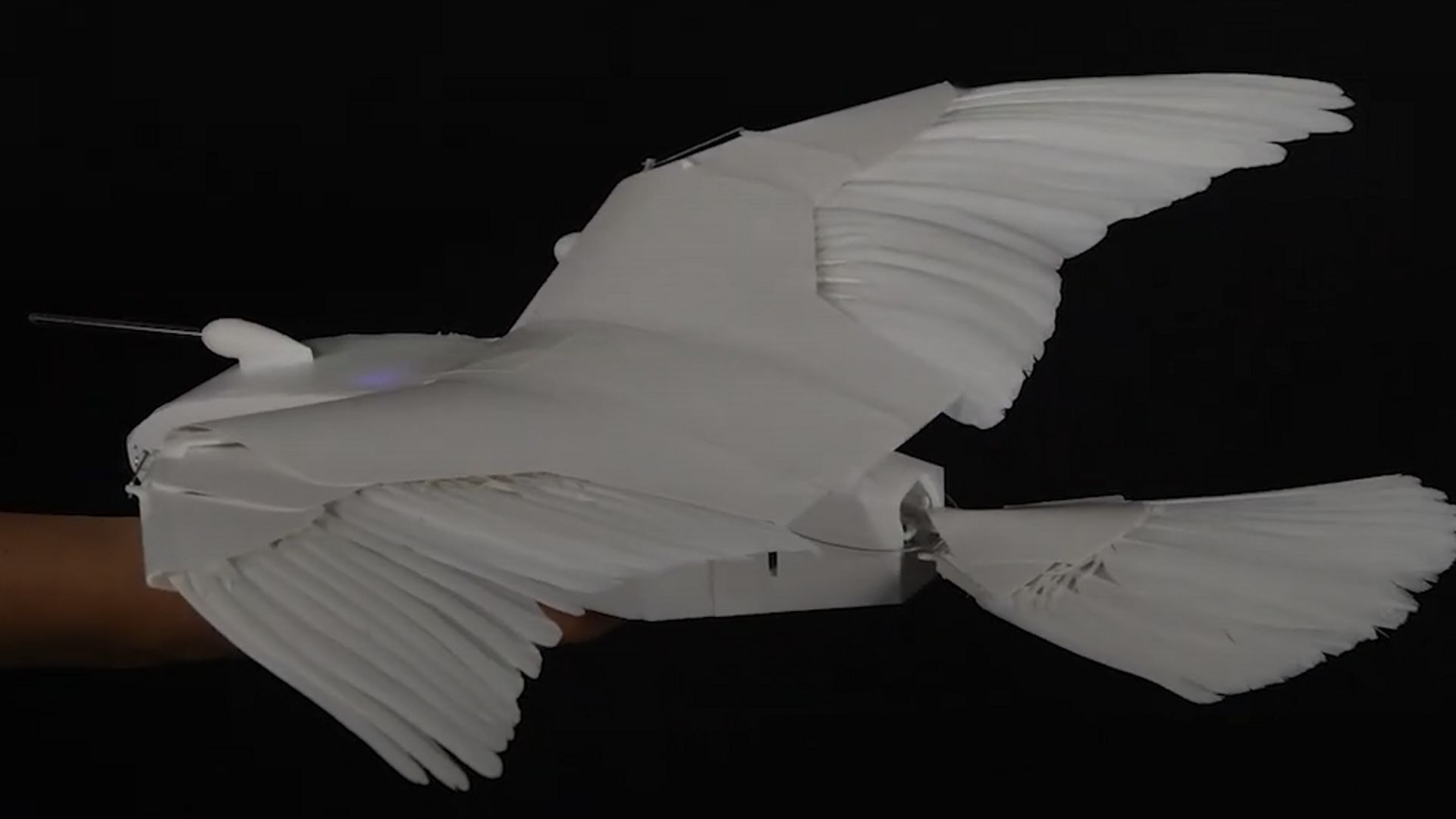
[JACK AYLMER]
A MARRIAGE OF TECHNOLOGY AND BIOLOGY COULD BE THE KEY TO ADVANCES IN
AUTONOMOUS FLIGHT.
RESEARCHERS HAVE DEVELOPED THE SO-CALLED PIGEON-BOT-TWO.
THE BIRD-LIKE ROBOT FEATURES AN ADAPTIVE TAIL AND WINGS CAPABLE OF ADJUSTING TO WIND CONDITIONS AT A MOMENT’S NOTICE– JUST LIKE THE WINGED-FRIENDS YOU SEE EVERYDAY.
PHYSICISTS BELIEVE IT COULD BE THE KEY TO RUDDERLESS FLIGHT FOR UNMANNED AIRCRAFT AND FIX STABILITY ISSUES LONG-ASSOCIATED WITH PLANES HIT BY TURBULENCE.
TESTS REVEAL THE BIO-BOT IS CAPABLE OF ADJUSTING ITS TAIL AND WINGS TO ANY GUST OR POWERFUL WIND IT ENCOUNTERS.
THE DESIGN OF THE AERIAL ROBOT IS EXACTLY LIKE IT SOUNDS– INSPIRED BY THE PIGEON– IT’S ACTUALLY ADORNED WITH DOZENS OF REAL PIGEONS FEATHERS.
THE SKELETON OF THE MACHINE IS FLEXIBILE AND ITS TAIL AND WINGS CAN MOVE LIKE A BIRD.
THE ROBOT RUNS WITH THE HELP OF A REFLEXIVE BUILT IN SYSTEM, WHICH USES NINE MOTORS WITH CONTROLS TO MIMIC A PIGEON IN FLIGHT.
RESEARCHERS SAY THEY HOPE THE PIGEON-BOT-TWO WILL LEAD TO MORE RELIABLE AND STABLE FLYING ROBOTS.
IF THE TECHNOLOGY IS EVENTUALLY ADOPTED BY CERTAIN GOVERNMENT AGENCIES– RESEARCHERS SAY THE BIRD-BOTS HAVE A SMALLER RADAR SIGNATURE THAN MOST AIRCRAFT AND BETTER PERFORMANCE.
BEIJING IS ALREADY REPORTEDLY ON BOARD WITH THAT USE OF BIRD-LIKE ROBOTS.
TESTING THE TECHNOLOGY FOR SPYING WITH ITS MILITARY.
OTHER U-S COMPANIES ARE ALSO REPORTEDLY EXPERIMENTING WITH THE CONCEPT.
FOR MORE ON THIS STORY– DOWNLOAD THE STRAIGHT ARROW NEWS APP OR VISIT SAN DOT COM.
FOR STRAIGHT ARROW NEWS– I’M JACK AYLMER.











